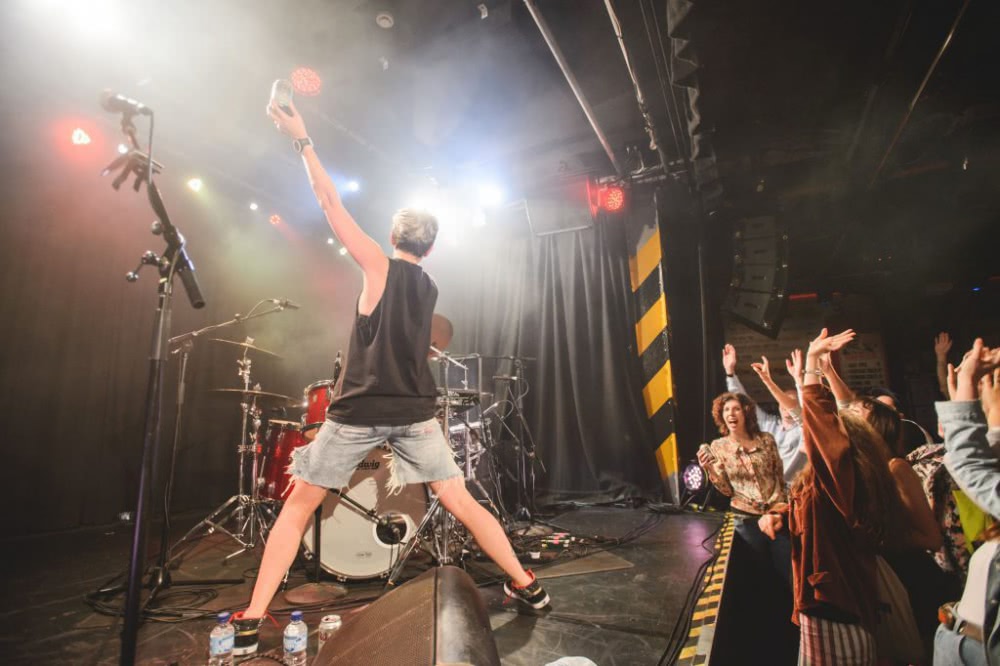Here’s how venue owners are restoring Sydney’s music scene

Heads up: this is not going to be one more article bemoaning the state of Sydney’s music scene. There are, after all, a lot of those about; so many, in fact, that you could be forgiven thinking Sydney was in the grips of a terminal decline, and becoming about as culturally stimulating as a week-old pot of yoghurt.
And yeah, certainly it’s true that times have been tough – the sting of Newtown Social Club’s closure is still fresh, and it’s hard to walk down King Street and not cringe at the sight of one of Sydney’s finest musical hubs having become a garish mini-golf club.
But venue owners in Sydney haven’t given up on the burgeoning arts scene, and neither should we. Indeed, in order to bolster an admittedly at-risk scene, venue owners around Sydney have taken a number of steps to nurture their live music acts, and live music spaces, actively casting aside the morgue sheet some were all too ready to drape over our city. Here, in four quick steps, is how they’ve done it.
Step One: By fostering Local Acts
It’s all too easy when running a venue to ignore local talent in favour of the big international draws, and to deny a foothold for emerging acts in order to give massive, chart-topping groups boosts that they don’t even really need.
But great venues don’t only hold their doors open for the acts they know will sell out – they give opportunities for a range of emerging, exciting groups. That, of course, is how a scene develops; it needs nurturing. And that’s exactly what venues like the Oxford Art Factory have done, cultivating emerging acts like Flowertruck and Rackett by allowing them to hone their already formidable talents in a professional, well-resourced live space.
And anyway, as Mark Gerber of the OAF tells it, balancing local and international bands has a benefit for all involved. “The benefits of sharing venues with internationals is pretty self-explanatory,” Gerber says.
“Locals are able to get exposure via an overseas act and those sharing the bill get to play in front of a local audience who otherwise may not have learned of their existence. The visiting international acts on the other hand get much needed local support, which they can add to their international fan base, as well they too getting to soak up much to do with the local music industry during their stay.”
Step Two: By Maintaining Relationships With Bands
Of course, step one doesn’t mean that venue owners should drop bands as soon as they get but a whiff of success. No: it is important for venue owners to develop important relationships with acts, booking them repeatedly and promoting them whenever possible.
That’s not to say that they should promote one act over all others – nepotism or favouritism aren’t appropriate avenues, no matter how bad things get. But venue owners should just work on maintaining open channels of communication with their artists, and ensure they look out for them whenever possible.
Step Three: Getting Involved In Festivals And Mini-Events
These days, it’s not just enough to stick a couple of bands on every weeknight and assume that the scene will then satisfactorily take care of itself. Festivals, although time and energy consuming, are a fantastic boost to the local creative community, and provide a real opportunity for artistic cross-pollination, not to mention a chance for audiences to catch a whole host of bands they might not normally have checked out.
Just look at something like Volumes, run across Oxford Street’s Oxford Art Factory, The Cliff Dive and Brighton Up Bar, or even the King Street Crawl: both represent a tremendous boost to local industry (commercial as well as creative) and provide some much needed exposure for bands as varied and as exciting as Georgia June and Georgia Mulligan.
And, for the venues, the cross-pollination essential to organising such festivals is often the key to unlocking new endeavours. “We firmly believe that working outside of one’s confines, together with your friends and neighbours, are the vital links to creating a vibrant and sustainable culture in your neighbourhood for all to enjoy and use,” says Gerber.
Step Four: Taking Risks
This step is possibly the most difficult of all. After all, when you’re a venue owner responsible for ensuring your own livelihood (not to mention the livelihood of your employees), taking a risk can feel almost suicidal – you have no way of knowing whether or not your outrageous ideas will catch, and if they don’t, you will be the first to suffer.
But taking risks – whether it be on unsigned, unknown bands, or on mini-events, or on nightly music programs – is how you keep the scene alive. It is how you stop Sydney from becoming the worst version of itself – from becoming the ghost town so many of its critics already think it is. And, perhaps most importantly of all, it’s how you give back to your audiences, ensuring they see and hear things they might have never otherwise have seen or heard.
“The Oxford Art Factory has always had a predilection towards wanting to be regarded as not your ‘run of the mill’ live music venue,” explains Gerber. “It has always been a policy of ours, since our first conceptual thoughts were being put together in 2005, that diversity and vibrancy is what must be offered up at the OAF.”
We’re working with the City of Sydney to tell the stories of Sydney’s live music scene. For more information about venue grants available through the City, head here.
This article originally appeared on The Industry Observer, which is now part of The Music Network.

































